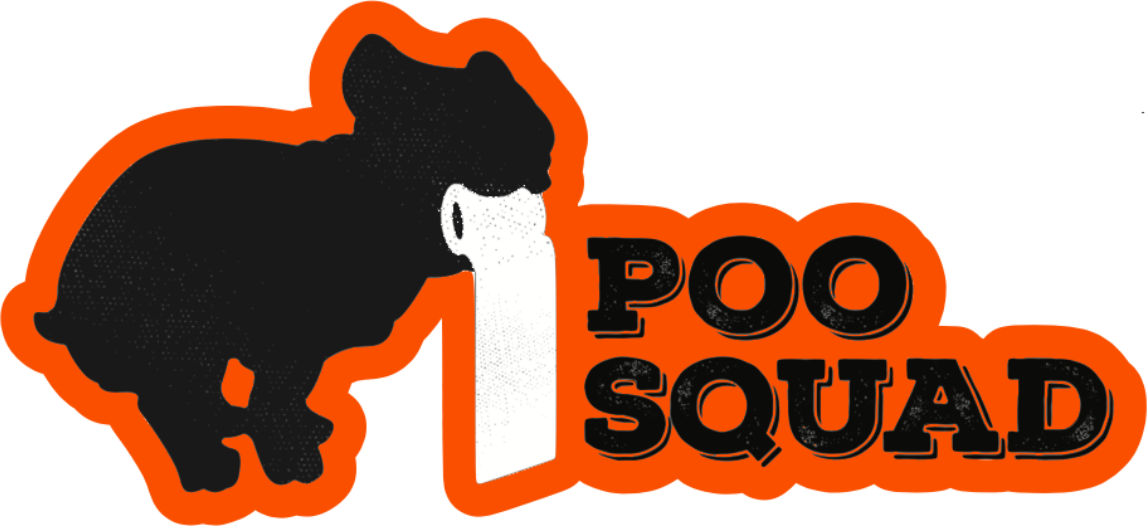Backyard Animal Poop Identification Guide (With Photos)
You can identify animal poop in your yard by checking size, shape, texture, and location. Rabbits leave pellets, raccoons leave twisted logs with seeds, and predators like coyotes leave hairy, ropey droppings. Use our chart to ID the source and protect your pets.
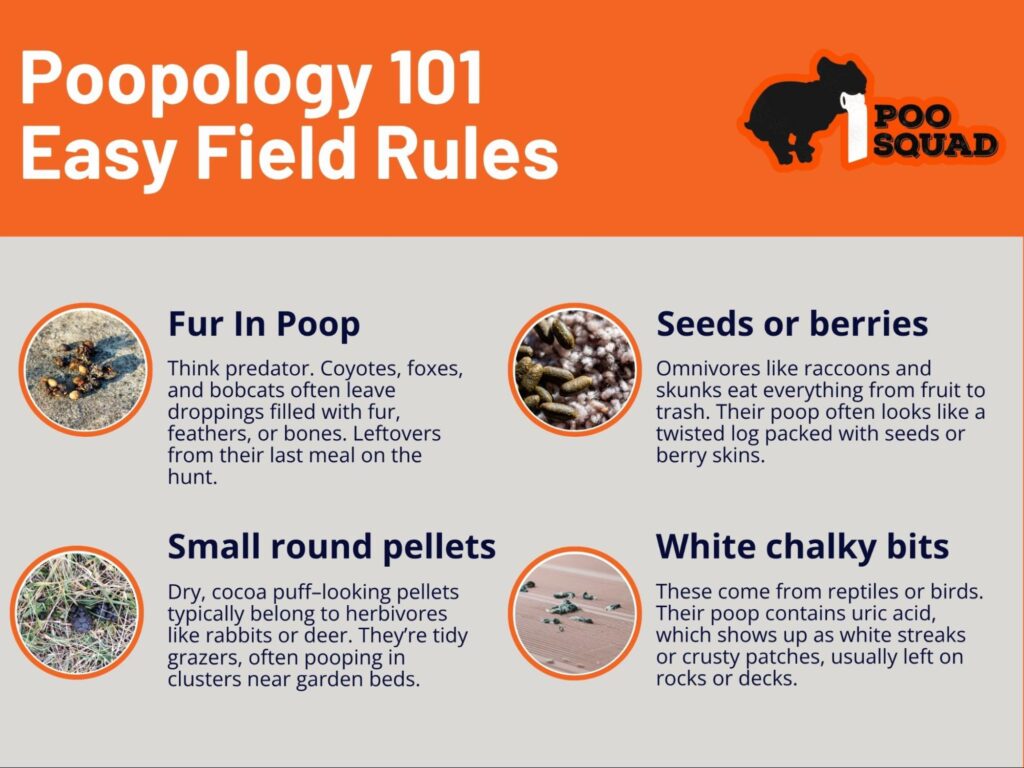
Step outside and spot mystery poop in your yard? It might not be from your dog. From rabbits and raccoons to foxes and feral cats, dozens of critters roam yards at night, and leave their calling cards behind. Knowing who left the mess can prevent health risks, property damage, and repeat visits.
Want a fast way to ID poop by species, diet, or shape?
Why You’re Finding Animal Poop in Your Yard (And What It Might Mean)
Most folks assume any poop in their yard belongs to their dog. After all, who else would be out there doing their business? But if your dog’s poop habits are predictable,and you’re still finding strange piles in odd places,it’s time to consider that you might have some uninvited visitors.
Food, Water, and the 5-Star Animal Buffet
Backyards with accessible trash cans, compost piles, or leftover pet food are basically open invitations for wildlife. Even small water sources like bird baths or dripping hoses can draw in animals looking to hydrate. If your yard offers food, shelter, or a path to either, don’t be surprised when critters start showing up regularly,and leaving behind clues.
The Night Shift: Nocturnal Droppings
Ever wake up to a fresh pile in a place you cleaned the day before? That’s the calling card of nocturnal visitors like raccoons, opossums, and even skunks. They do their wandering while you sleep, and unless you’re checking your yard with a flashlight at 2am, the poop is usually your first clue.
Fences Aren’t the Fortresses You Think
You might have a fully fenced backyard and still find yourself dealing with mystery droppings. That’s because climbers like raccoons and squirrels can easily scale fences, while smaller animals like rabbits, rats, or snakes sneak under them. Basically, if an animal wants in,they’ll get in.
Repeat Offenders and Turf Wars
Some animals mark territory with poop, not pee. If you’re finding droppings in the same place over and over, it might not be a coincidence. This behavior is common in species like foxes or stray cats, who return to familiar zones to claim them again and again.
Backyard Animal Poop Identification Chart (With Photo Examples)
Whose Poop Is It Anyway?
You don’t need a wildlife biology degree, a keen eye, maybe a little courage, and this handy breakdown. Below you’ll find the most common backyard culprits, sorted by diet, shape, and droppin’ style.
Herbivores (Pellet or Cluster Poop)
Rabbit
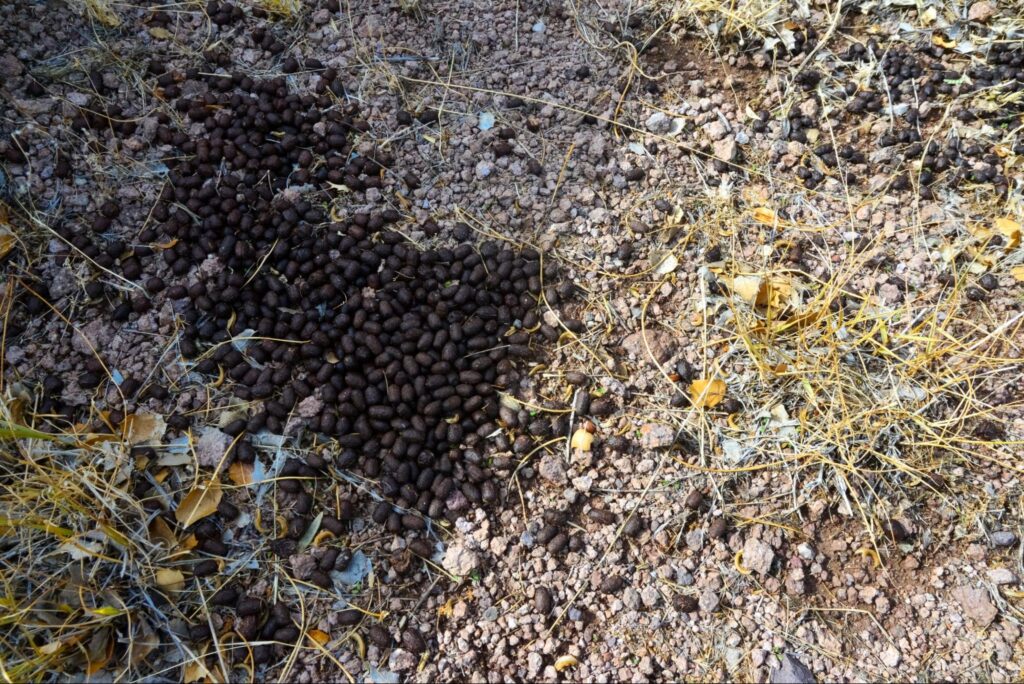
- Tiny, dry, round pellets scattered loosely.
- Usually found in gardens or shaded patches.
- If it looks like someone spilled Cocoa Puffs, it’s probably a bunny.
Deer
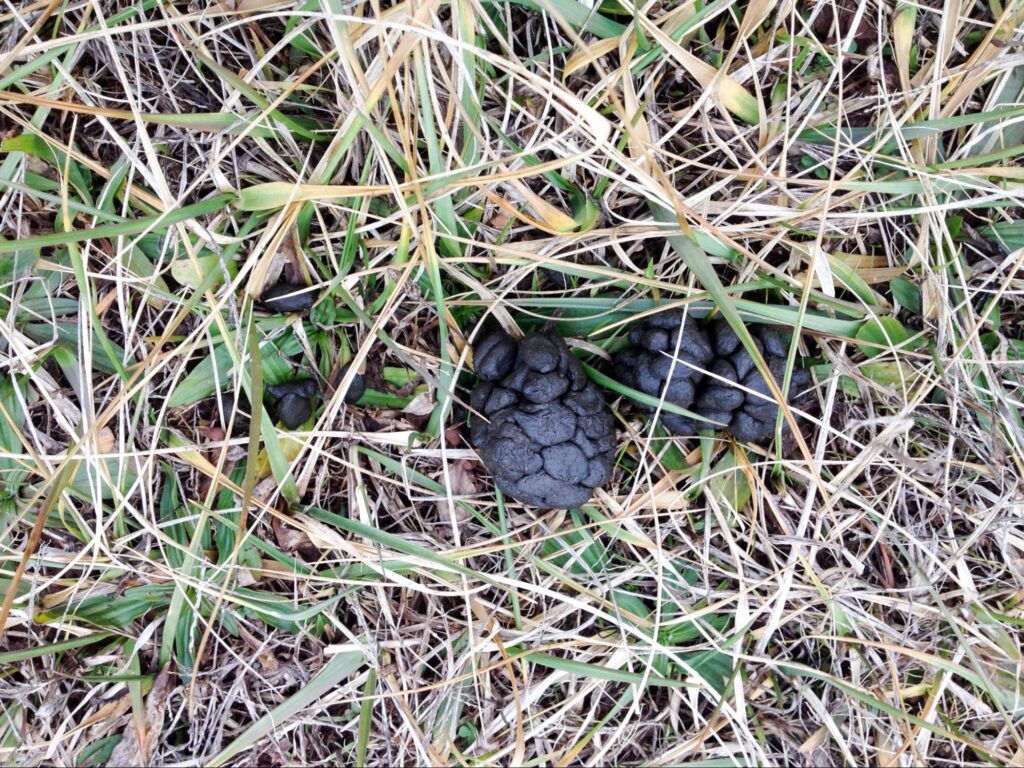
- Larger than rabbit, shaped like oval pellets in tight piles.
- Common in more rural yards or wooded suburbs.
- Often left behind near tree lines or garden beds.
Goat/Sheep (Rare)
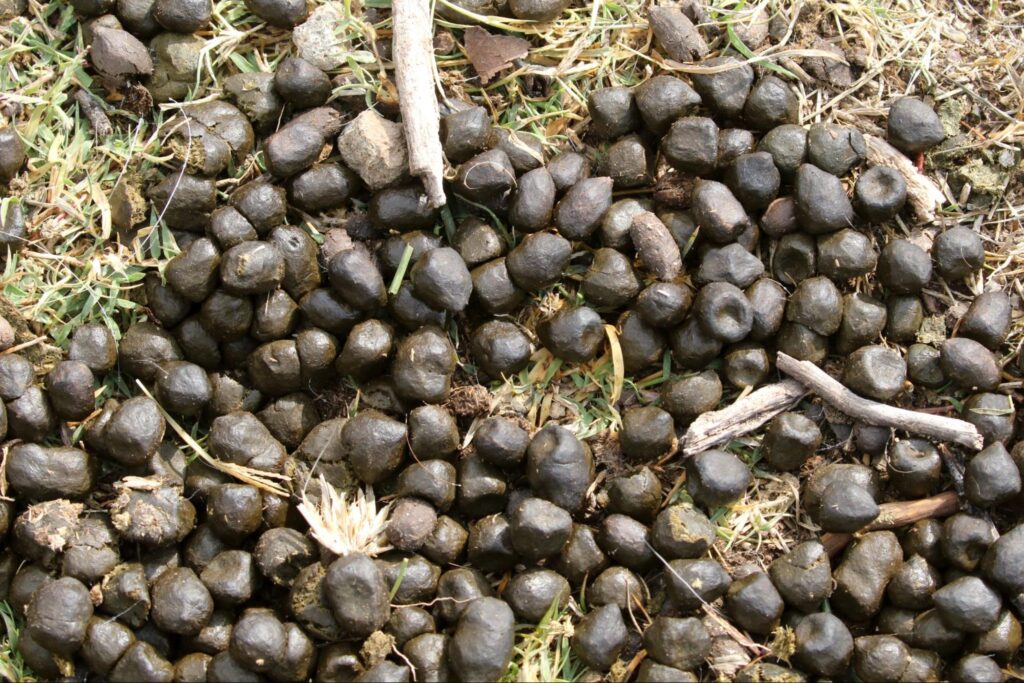
- Oval, dry pellets in uniform clusters.
- Typically from nearby farms or escapes from petting zoos.
- Not your usual backyard suspect, but it happens.
Omnivores (Segmented, Soft, or Full of Debris)
Raccoon
- Long, firm logs with twisted shape and visible seeds or berry bits.
- Often found on flat surfaces,yes, even decks or porches.
- If it looks like a slightly angry granola bar, suspect raccoon.
Possum
- Similar to raccoon but smoother, often curved at the ends.
- Typically lighter in color.
- Here’s how to tell: possum poop is smoother, less “textured.”
Skunk
- Small log-shaped droppings, sometimes with insect parts.
- Smells even worse than you’d expect.
- Found near sheds or under decks.
Fox
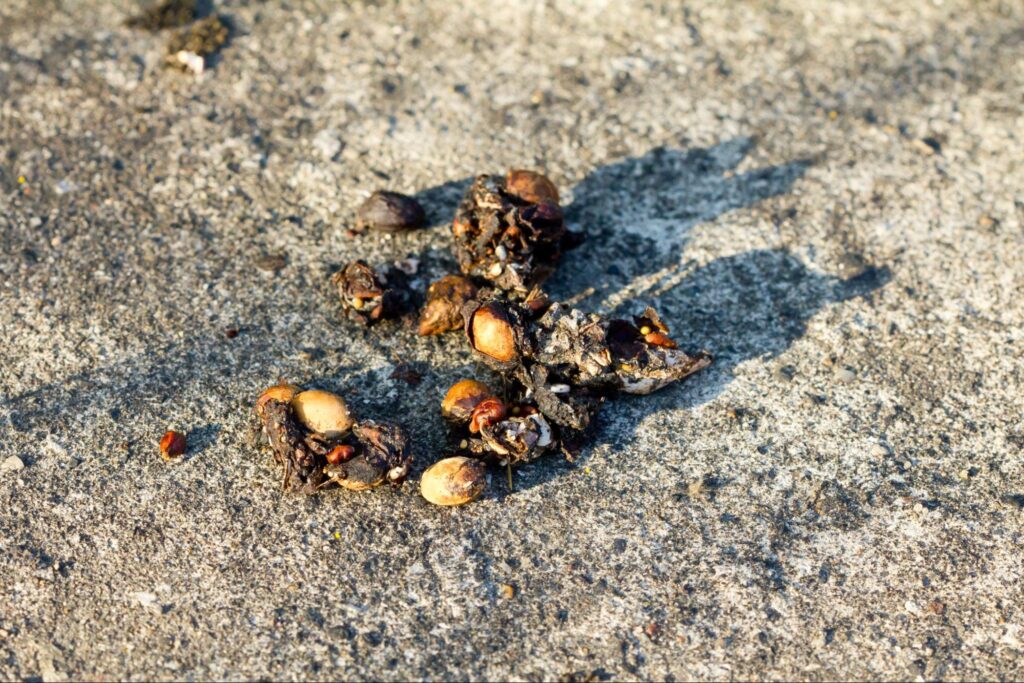
- Thin, rope-like, often pointed and containing fur or feathers.
- Usually found on rocks or logs (they like to display their work).
How can I tell raccoon vs. possum if they both eat fruit?
Look at firmness and twist,raccoons leave firmer, segmented droppings with more visible debris. Possum is smoother, usually curved.
Carnivores & Predators (Twisted, Hairy, Pungent)
Coyote
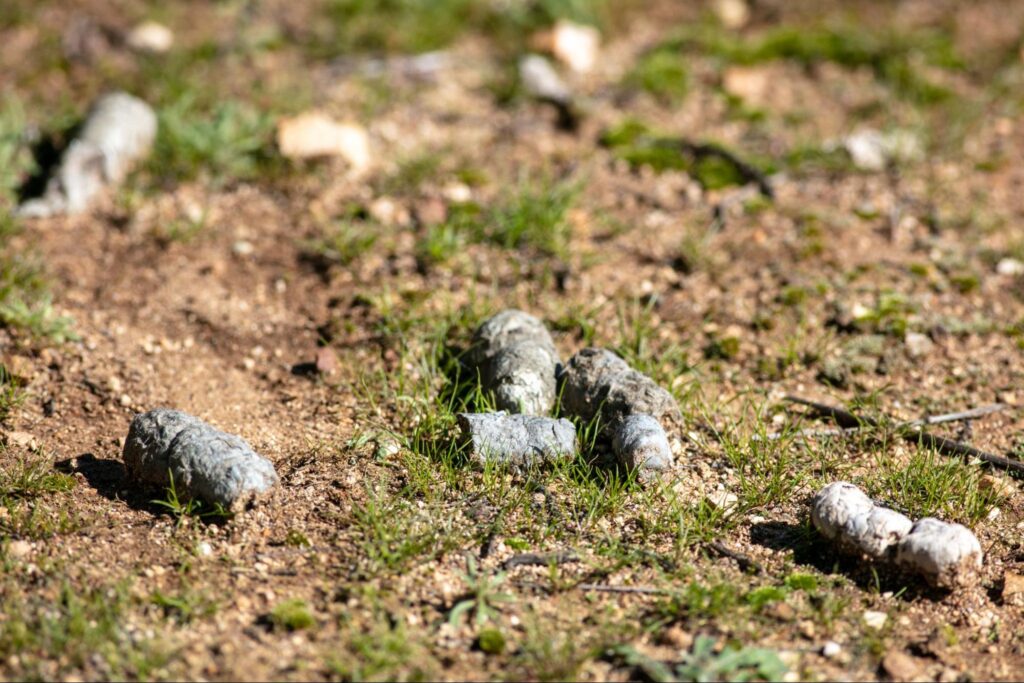
- Tubular, with pointed ends and visible fur.
- Often resembles knotted ropes and can smell pungent.
- Larger than fox or dog, and found on trail paths.
Dog
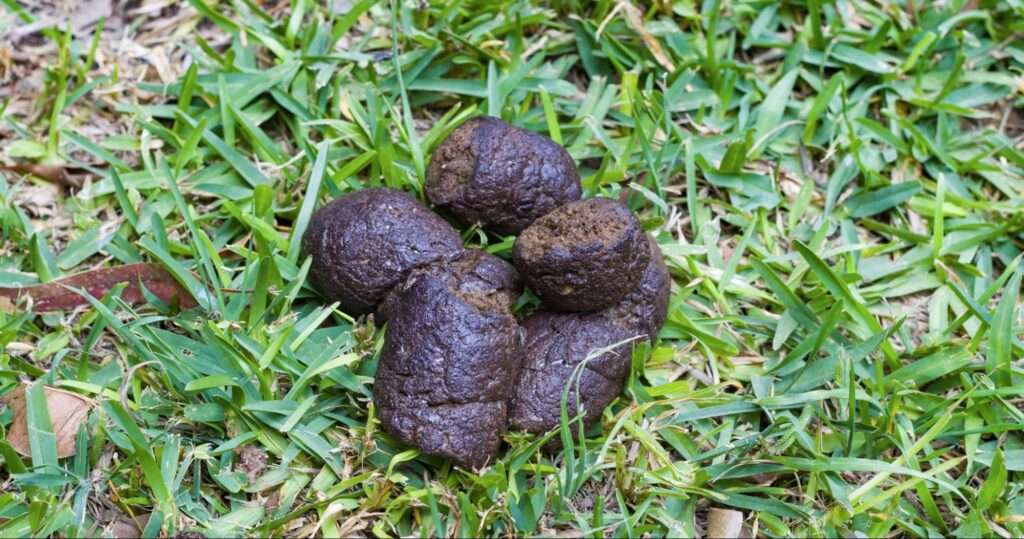
- You know this one,but if it’s softer, fresh, and near your pet’s known zone, it’s likely them.
- Smell and pattern help differentiate from wild canines.
Cat
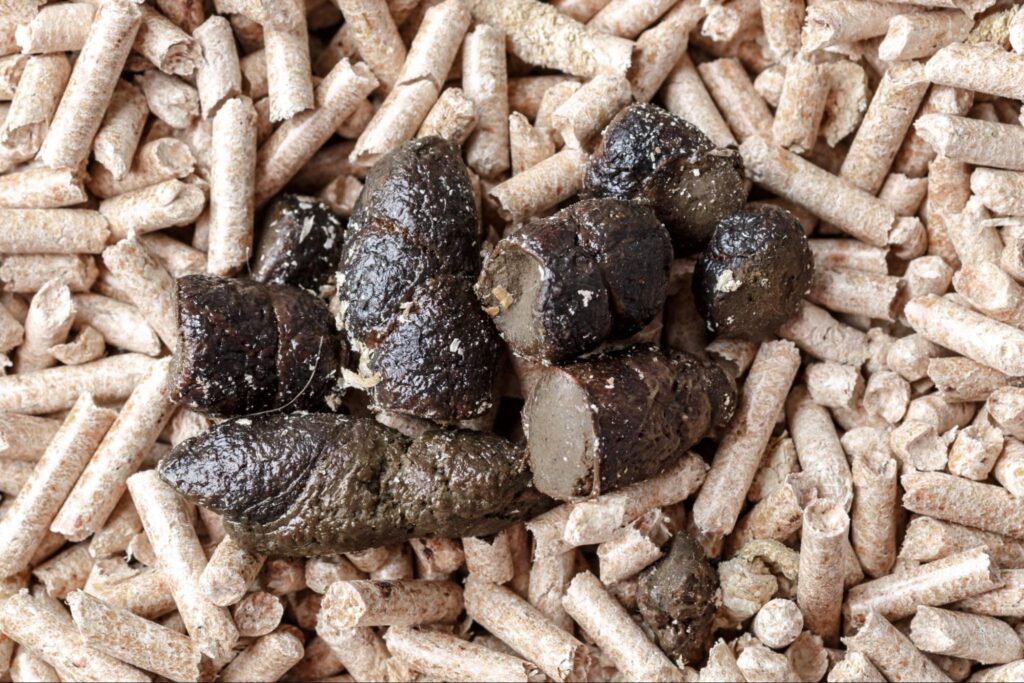
- Typically buried, segmented, and dry.
- Rarely seen unless your cat misses the litter box,or it’s a stray.
- Can resemble small dog poop, but often has visible fur or bones.
Small Rodents & Birds
Rat/Mouse
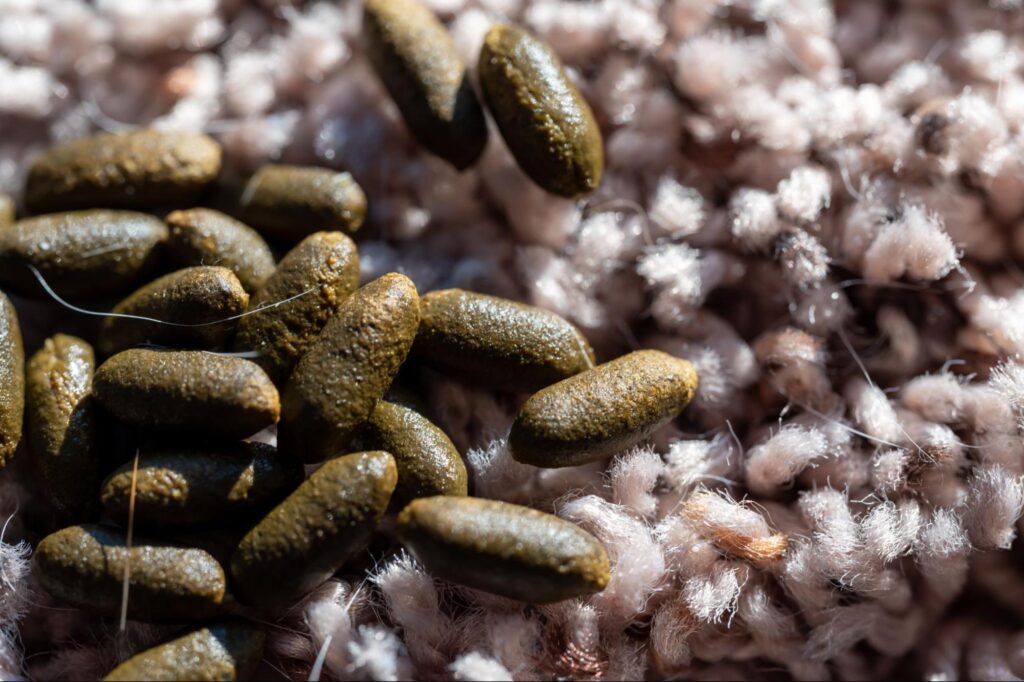
- Tiny, shiny black pellets shaped like grains of rice.
- Often clustered near fences, garages, or food sources.
- Look for droppings under sheds or grills.
Squirrel
- Similar to rat but slightly thicker and curved.
- Usually found near trees or along fences.
- If you’ve got acorns missing and tiny poops nearby, bingo.
Bird
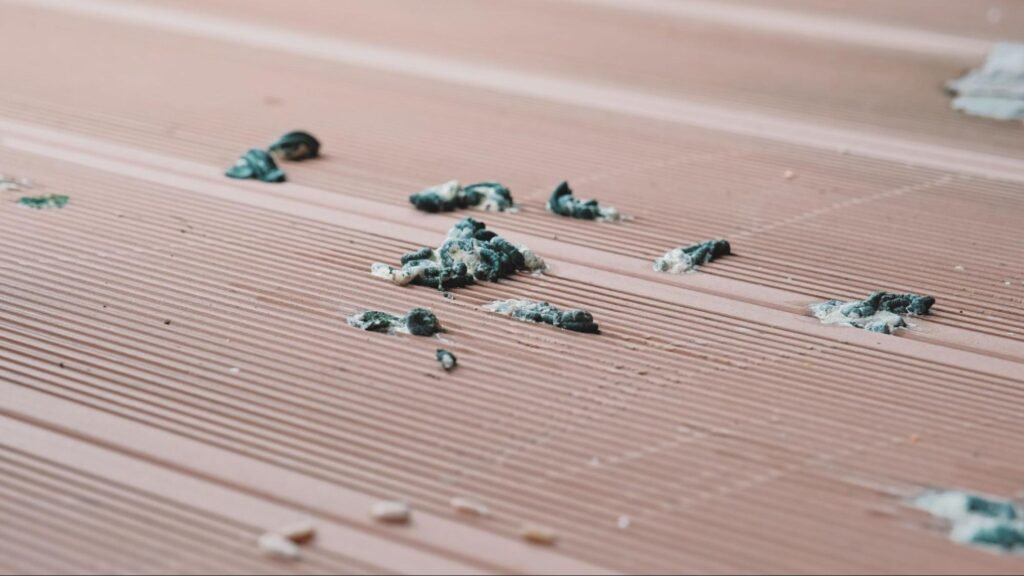
- Black and white mix, due to uric acid.
- Usually splattered rather than piled.
- Most often found on decks, patios, or car roofs.
Bonus (and Rare) Finds
Snake
- Half-solid, half-liquid with urates (chalky white parts).
- Often mistaken for bird droppings but chunkier.
- Found near rocks or warm surfaces.
Bear
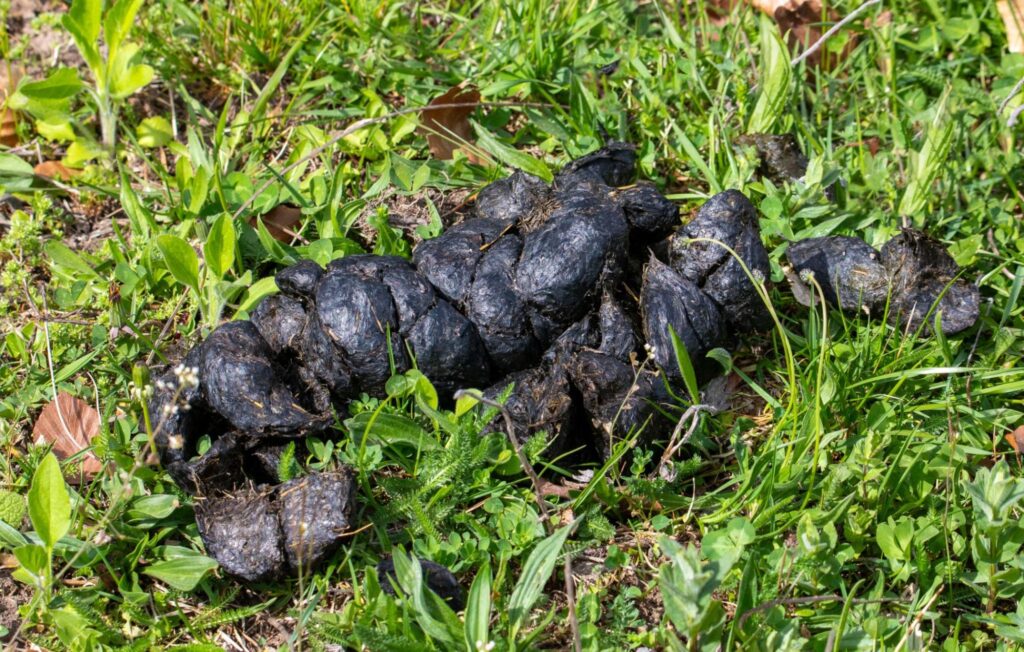
- Massive, seeded piles.
- If this is in your yard… call someone. And maybe move.
- Extremely rare unless you’re mountain-adjacent.
Drop spotted and still not sure?
What’s Inside the Poop? Clues from Contents
Not all poop is created equal,and what’s inside tells the real story. If you’re trying to ID an animal by its droppings, shape and size help, but the contents can give you the final clue.
Yes, we’re saying you might need to look closer. (We didn’t say this job was glamorous.)
Here’s what to scan for,without getting too hands-on:
Seeds, Berries, and Grass = The Fruit-Lovers Club
If you see bits of fruit skin, berries, or tiny seeds, you’re likely dealing with an omnivore like a raccoon, possum, or fox. Herbivores (deer, rabbits) may leave behind undigested grass and leafy bits,sometimes in pellet form, sometimes clumped.
Bones, Fur, and Shells = Hunters at Work
Carnivore droppings tend to include fur, feathers, insect shells, or bone fragments. These signs point to foxes, coyotes, and sometimes feral cats. If it looks like a mini time capsule from the food chain, you’re dealing with a predator.
White Tips or Chalky Streaks? That’s Uric Acid
Reptiles and birds don’t urinate like mammals. Instead, their poop includes a chalky white substance called urates. If you see white and black mashed together in one dropping,especially on hard surfaces,you’re probably looking at bird or snake poop.
Smell: Nature’s Not-So-Subtle Signature
This one’s gross but true. The scent can help you ID the species:
- Mild or grassy = likely herbivore.
- Sour or musty = raccoons or possums.
- Pungent and foul = predators or omnivores, especially if there’s meat in their diet.
- Overwhelming and sharp = skunk or fox,yes, their poop stinks too.
We’ve coined a few terms for unusual finds. Ever see poop that looks like it’s been through a kindergarten art project?
That’s what we call a “Poocasso”,usually from a dog that’s eaten something they shouldn’t have, like crayons, socks, or glitter-covered craft supplies. It’s funny… until it’s not.
Is It Dangerous? Poop Safety, Diseases & What to Do
Not all backyard surprises are harmless. Some animal droppings carry bacteria and parasites that can spread to pets,or even humans. If you’re scooping up mystery scat, here’s what you need to know before you roll up your sleeves (or better yet, don’t).
Wild Poop, Real Risks
Certain animal waste,especially from raccoons, coyotes, and rodents,can harbor dangerous pathogens. The big ones include:
- Roundworm (Baylisascaris): Common in raccoon poop. Invisible to the eye and extremely hazardous.
- Parvovirus: While not spread by poop alone, infected animals can shed the virus. It survives in the soil for months.
- Leptospirosis: Found in urine-contaminated feces, especially from rodents or raccoons. It can cause serious illness in both people and pets.
Why the Mower Method is a Bad Idea
Some folks think running a lawnmower over poop is the same as cleaning it. It’s not. All that does is spread potentially dangerous bacteria and viruses across your yard,and worse, it breaks up the droppings so much that you lose any chance of identifying them properly. You’re turning poop into an aerosol.
Don’t do it.
Poop Safety Checklist
- Never touch droppings without gloves,even from your own pet.
- Sanitize your tools (or better yet, let us bring ours).
- Keep kids and pets away from mystery piles until you’ve figured out what it is.
- Disinfect surfaces where droppings were found, especially if near patios or play areas.
Poo Squad Protocol
We take this seriously.
Our scoopers follow strict sanitation protocols, triple-sanitizing tools and shoes between yards to prevent cross-contamination. It’s part of our commitment to pet safety and public health,because the poop may not be yours, but the risk still is.
Could This Be Human Poop?
We’ve heard this one more than once, and it always catches people off guard. The truth? It’s probably not. Urban dogs or raccoons sometimes leave behind waste that looks human,especially in size or texture,but it rarely is.
Here’s how to tell:
- Human poop typically lacks visible undigested materials like seeds, fur, or berries.
- If you see clear dietary clues, like pet kibble or feathers, you’re likely looking at a large omnivore (think raccoon or free-roaming dog).
Still unsure?
Snap a photo (we’ve seen worse) and reach out to the squad. We’ve ID’d it all.
Advanced Backyard Sleuthing (For the Curious and Concerned)
So, you’ve found the poop. Now what? If you’re the type who likes to solve mysteries (or reclaim your yard), it’s time to go full detective mode. With a little curiosity and the right tools, you can track your intruders like a backyard Sherlock Holmes.
Trail Cams: Your Secret Weapon
Want to know who did the doo-doo?
Set up a motion-activated trail cam overnight. These little gadgets are surprisingly affordable and can reveal the truth behind those early-morning piles. We’ve had Poo Squad clients catch everything from possums to the neighbor’s rogue corgi, no judgment.
Match the Tracks to the Poop
Look for prints nearby, especially in muddy or soft soil. Raccoons leave hand-like prints. Coyotes? Dog-like paws with straighter nails. When poop and tracks align, you’ve got your answer.
Poopology 101: Easy Field Rules
Here are some simple, field-tested ID rules:
- Fur in poop = predator (fox, coyote, bobcat).
- Seeds or berries = omnivore (raccoon, skunk).
- Small round pellets = herbivore (rabbit, deer).
- White chalky bits = reptile or bird.
A quick poke with a stick (gloved, of course) can often reveal the dietary DNA of your visitor.
Location, Location, Location
Where you find the poop matters too:
- Near fences, under decks: Think raccoons and opossums.
- Middle of the lawn: Usually dogs or foxes.
- In garden beds or around tree trunks: Rabbits, skunks, or squirrels.
- On patios or porches: That bold visitor might be a possum,or your cat.
Time of day matters as well. Poop appearing overnight? Likely nocturnal. Daytime piles in fresh spots? You’ve got a daytime drifter like a neighborhood dog or stray cat.
Pro Insight: The Poo Squad Formula
After years in the field, we’ve found that poop location + shape + color gets us about 90% accuracy in species identification. Sometimes even before we see the prints. It’s not an exact science, but when you’ve seen as much poop as we have… you start to get a sixth sense for it.
Clean Up the Right Way (Without Making It Worse)
Once you’ve cracked the case and ID’d the mystery poop, don’t stop there,now it’s cleanup time. But hold up,how you clean matters. Too many homeowners unintentionally spread disease or attract more critters by handling poop the wrong way.
How to Dispose of Animal Poop (The Safe Way)
- Bag it: Always use a dedicated poop bag or plastic bag. No bare-handed scooping.
- Double seal it: Once it’s bagged, double it up to lock in bacteria and smell.
- Never compost it: Pet and wild animal feces carry parasites that can survive composting and contaminate soil or food.
Pro tip: If you’re in a region like New Jersey, some restrictions prevent hauling pet waste off-site. That’s why Poo Squad never uses your trash cans,and we always follow local rules while keeping your property clean and odor-free.
Sanitizing Without Harming
Yard looking a little funky after your cleanup session?
Choose pet-safe disinfectants designed for outdoor use. Avoid bleach and ammonia-based cleaners,they can damage grass, hurt paws, and linger in the soil.
When we at Poo Squad sanitize after each yard, we use specially formulated, eco-safe products to eliminate bacteria without harming your pets or property. It’s part of our promise to prevent cross-contamination, alongside triple-sanitized tools and shoe dips.
After the Cleanup: Stay One Step Ahead
Once you’ve dealt with the poop, take a few extra minutes to make sure it doesn’t return:
- Set up a camera: Trail cams aren’t for hunters; they’re great for monitoring nighttime activity.
- Lock down food and trash: Remove water sources, seal bins, and bring pet food indoors.
- Block common entry points: Cover holes under decks, trim branches over fences, and secure gates.
Poo Squad’s Bonus Tips for Homeowners
You’ve got eyes on the poop, the cleanup handled, and maybe even a trail cam rolling. But want to take things to the next level? These Poo Squad extras aren’t perks, they’re part of why our clients stay loyal for years.
Know the Code: Poo Squad’s Fun Lingo
We’ve got names for everything:
- “Sharp Shooters” always go in the same corner of the yard.
- “Waddling Bandits” are the dogs who poop on the move, leaving a trail.
- “Pudding Pups” signal loose stool that might need attention.
- And “Poocassos”? These colorful masterpieces come from dogs that eat crayons, socks, or mystery snacks,yes, we’ve seen it all.
Ask your scooper which one your dog is. It makes the whole thing a little more fun (and informative).
Still Unsure? Here’s What to Do Next
Sometimes, even with charts, photos, and our sharp-eyed crew, it’s still hard to ID mystery scat. No shame in that. Here’s what we recommend:
- Take a clear photo with a size reference,use a coin or small object, but please, not your chapstick.
- Send it to your local animal control or, if you’re a Poo Squad customer, send it to us. We’ve seen thousands and can often tell in seconds.
- Book a one-time sanitization or consultation visit if the pile seems suspicious or frequent.
- Want help identifying future visitors? We’re working on a downloadable, printable poop chart. Sign up below to get access once it’s live.
- Ready to make poop problems disappear? Schedule your recurring cleanup and yard care with Poo Squad today.
Book Now with Poo Squad, because nobody should lose sleep over mystery poop.
Frequently Asked Questions About Animal Poop in Yards
You’ve seen something strange in the grass, and now your Google history is, well, interesting. These are the questions homeowners ask us all the time, usually right after a confused backyard moment:
Why does this poop look so clean?
Some wild animal droppings, especially from rabbits and deer, are dry and compact,little to no smell, neat little pellets. It’s often a sign of a herbivore, not a sick animal.
Could my toddler have done this?
We wish this weren’t a recurring question. But in 99.9% of cases,no. While human poop and raccoon or large dog poop can look similar, context and location usually rule that out fast.
Why does it not smell at all?
Fresh poop smells. If it doesn’t, it might be old or from a low-protein diet animal like a rabbit or deer. But don’t use smell alone as your identifier,let your eyes (and our guide) lead.
What tools help ID it?
Besides this guide? Use gloves, a ruler or coin for scale, and if you’re up for it,a trail cam. Photos with reference objects make a huge difference when you ask for expert help.
Is it okay to leave it if it’s from a wild animal?
Not really. Many wild droppings carry bacteria, parasites, or even viruses. Plus, left-behind poop can attract repeat visitors. Best bet? Remove it safely and sanitize afterward.
Author: Chief Scooper
Jamie Coones is the founder of Poo Squad. He started the original location in Manhattan, KS in 2017 and has since licensed the brand to another 20 other owners with locations across the country.
